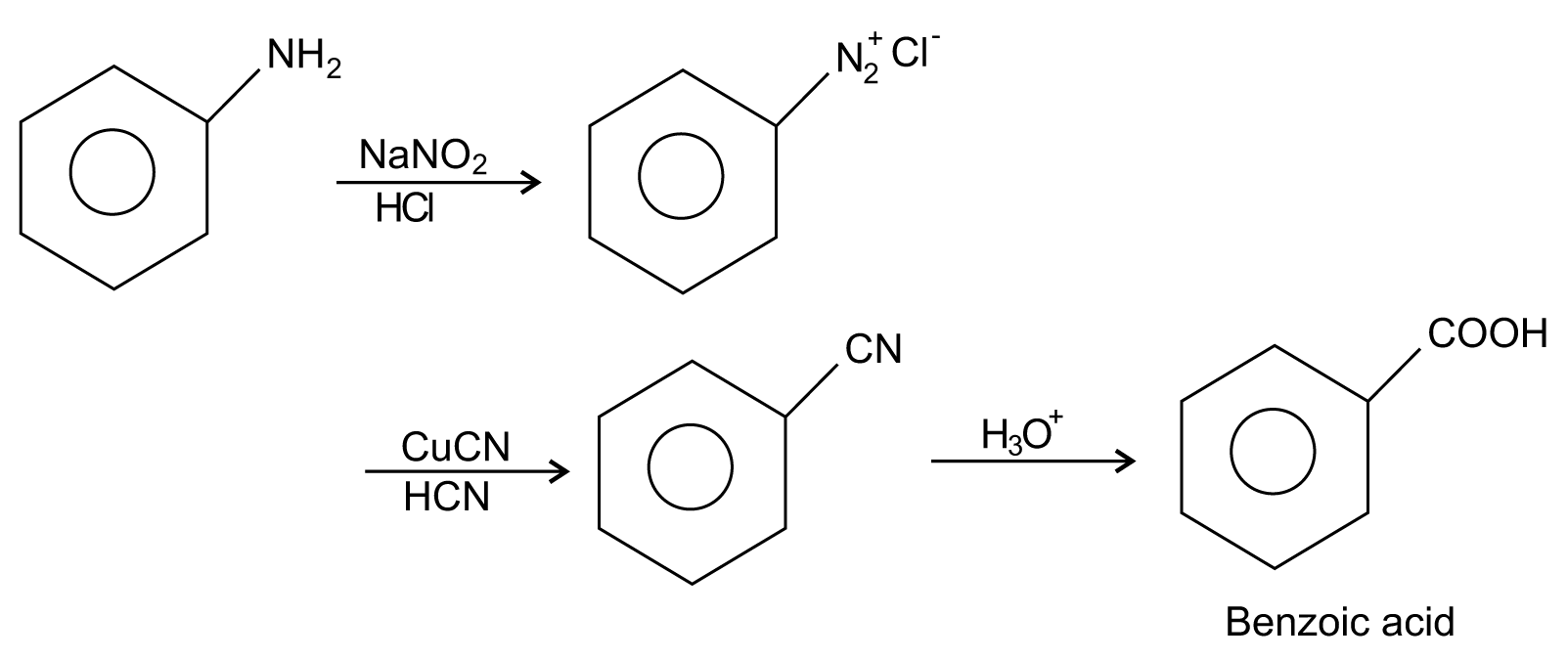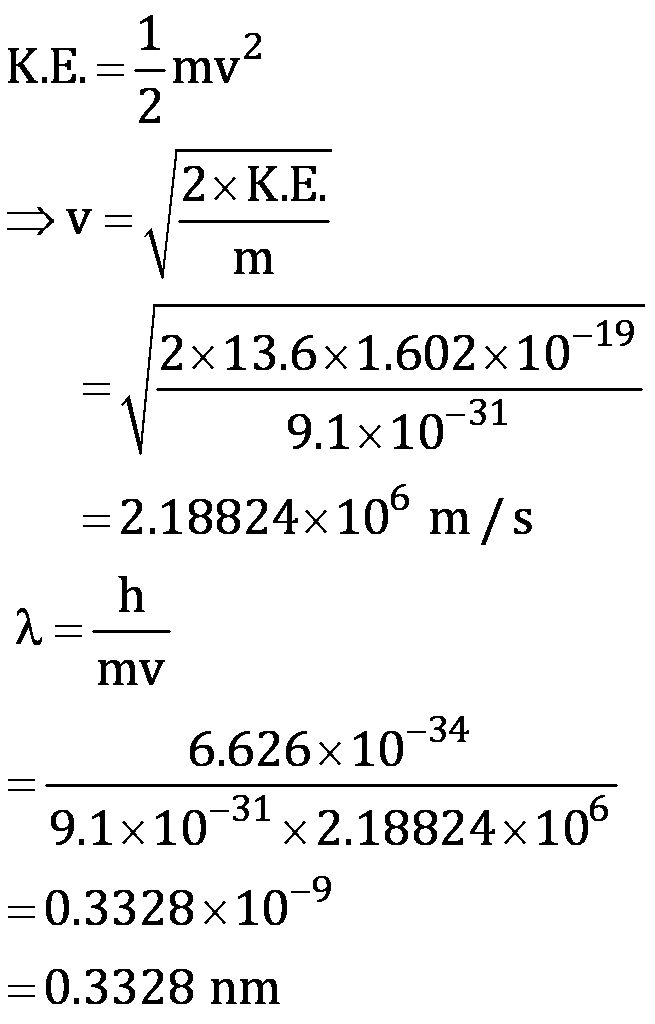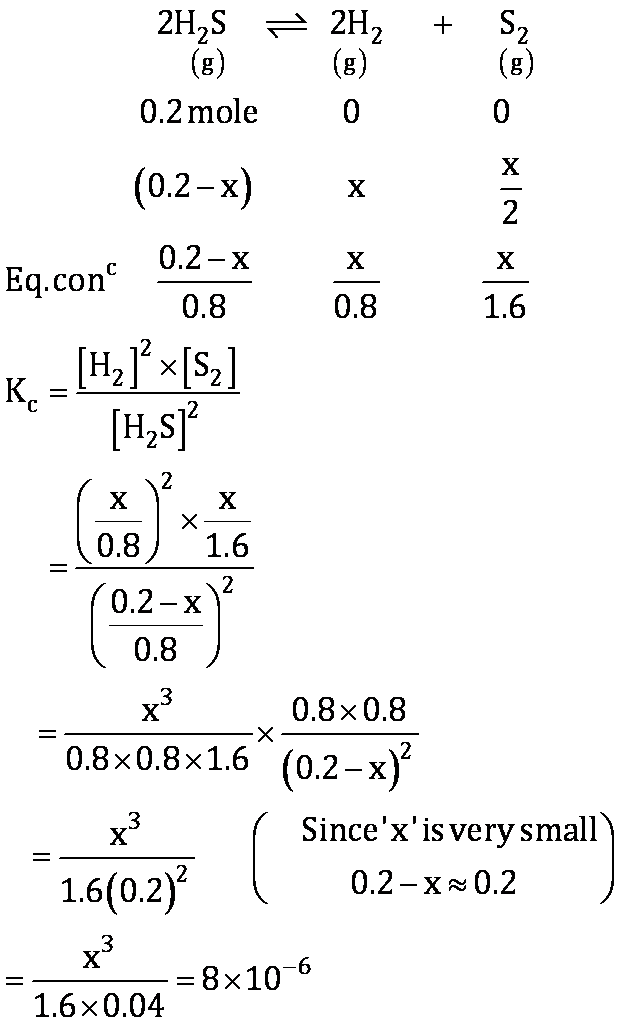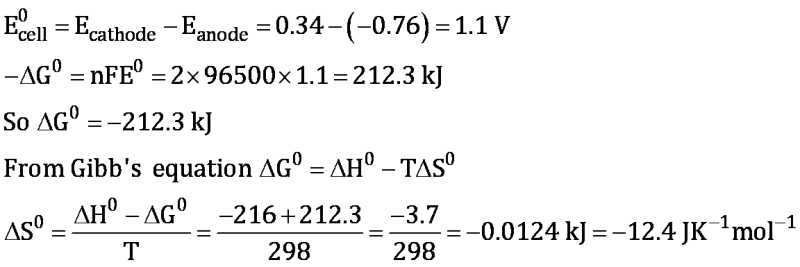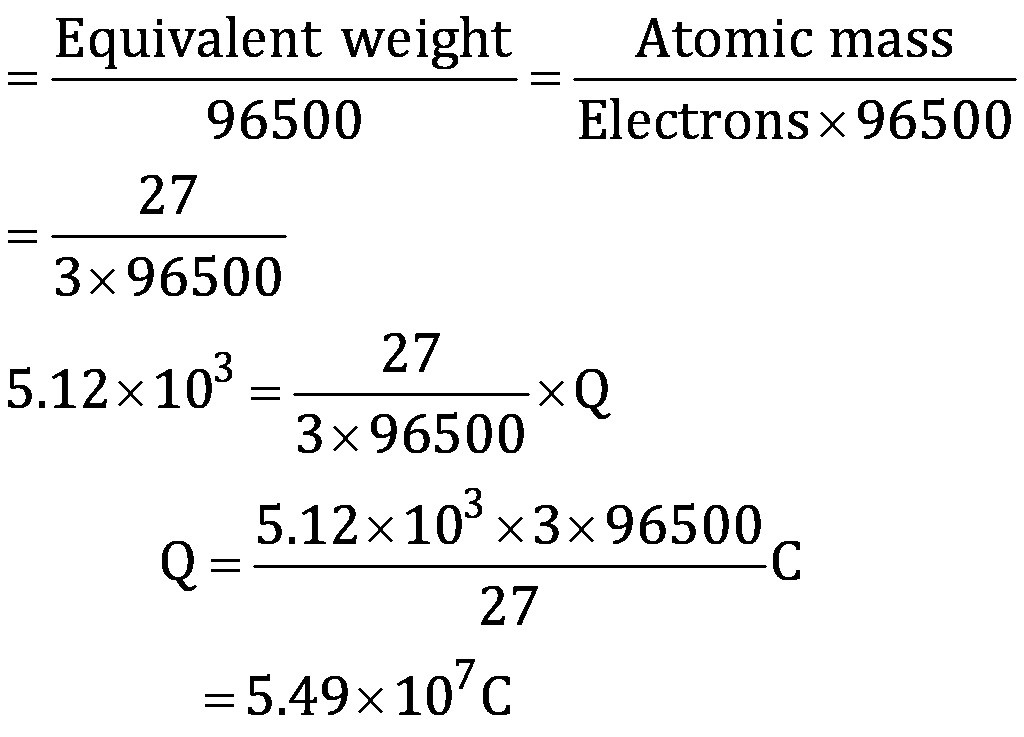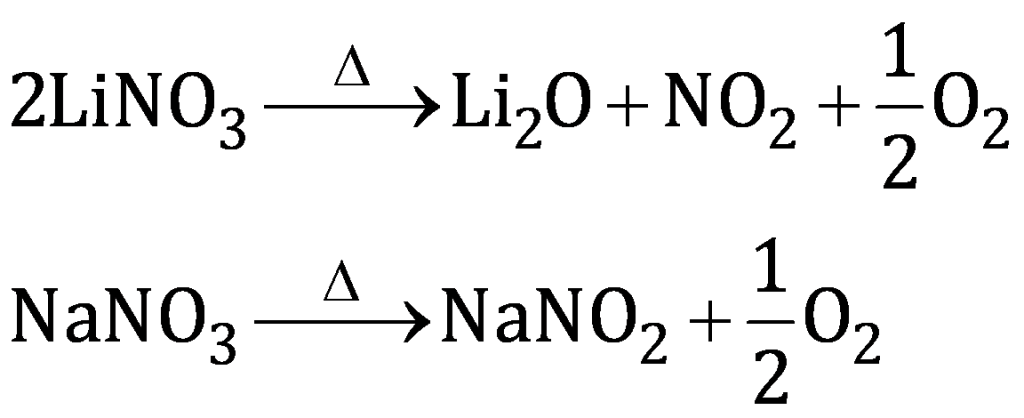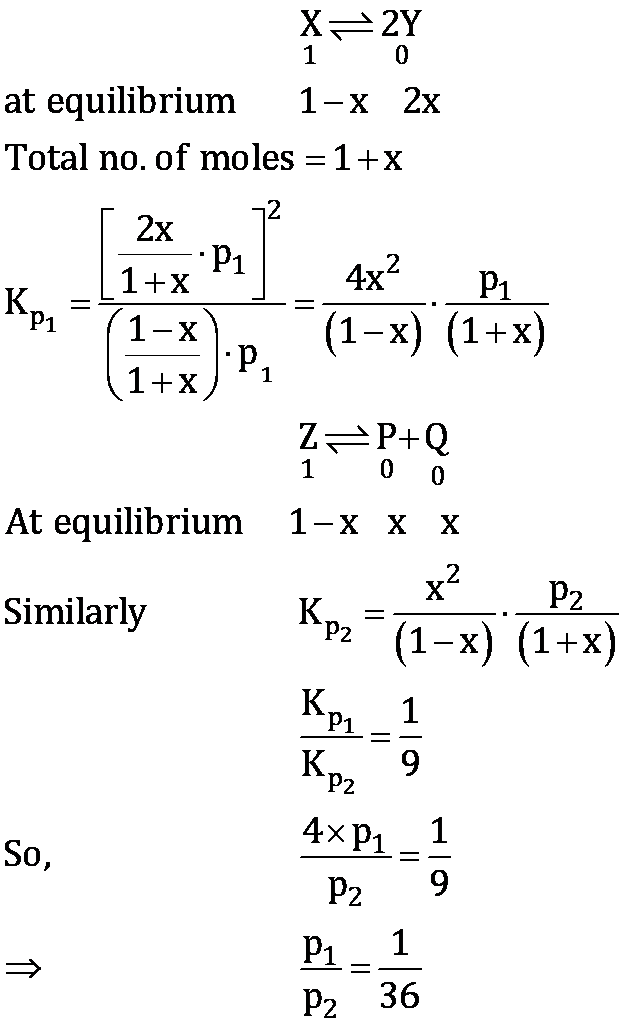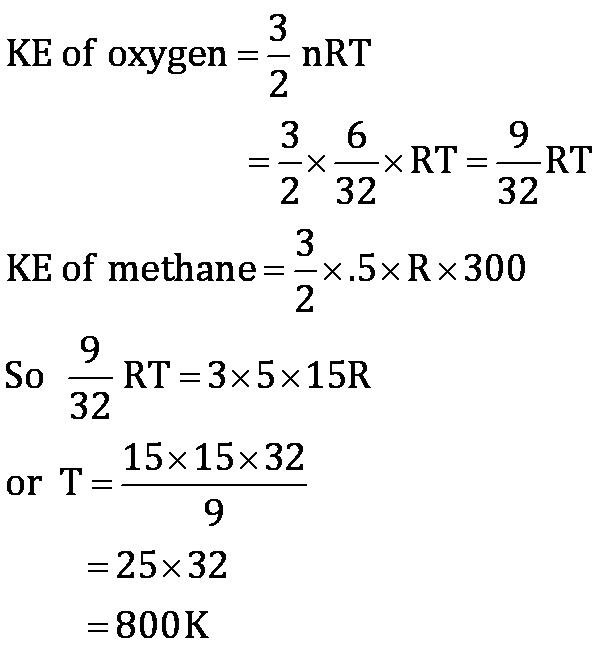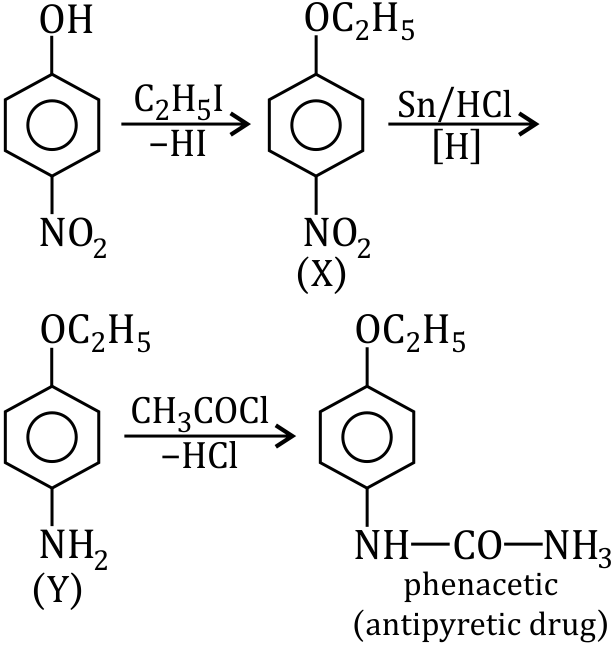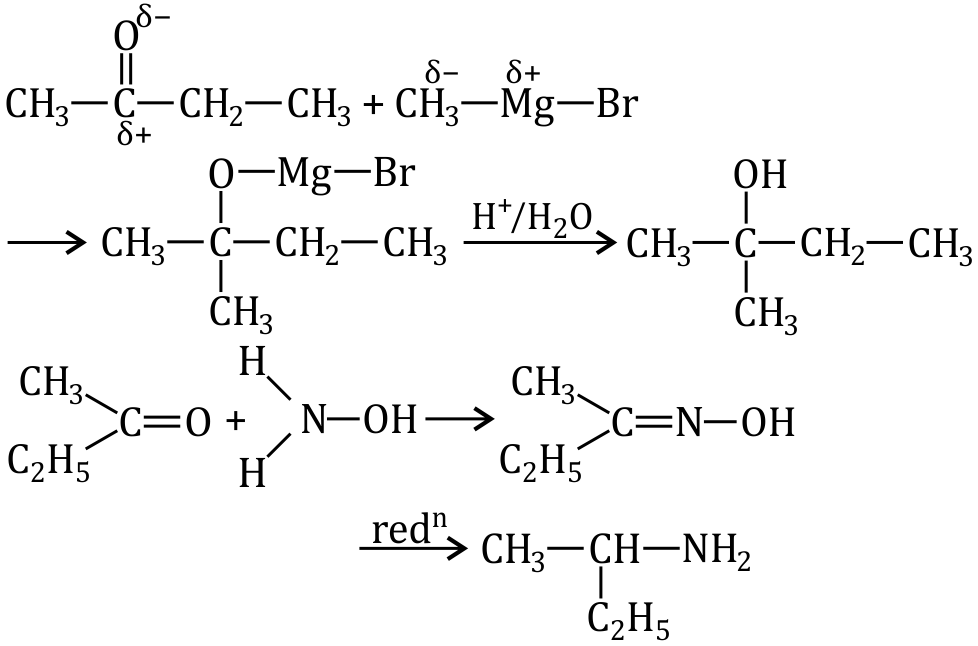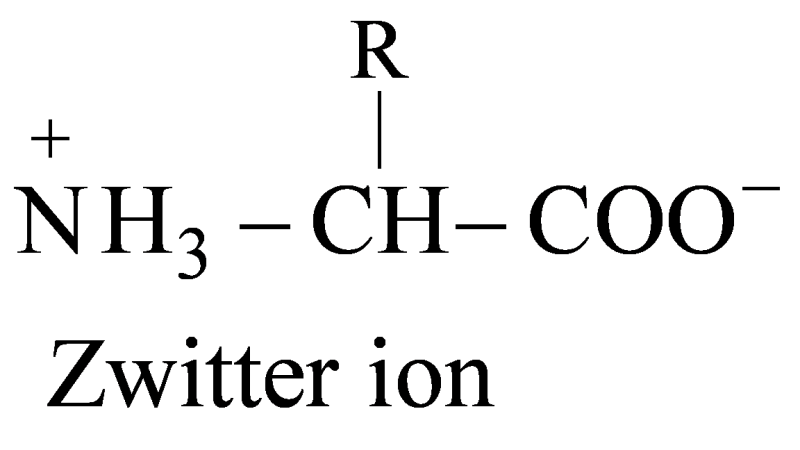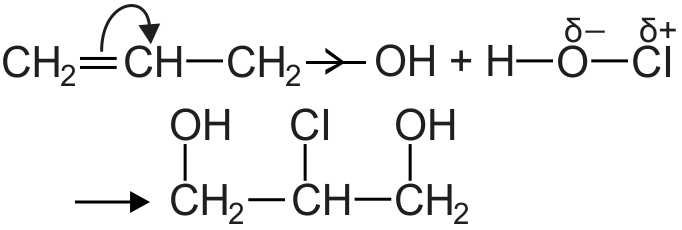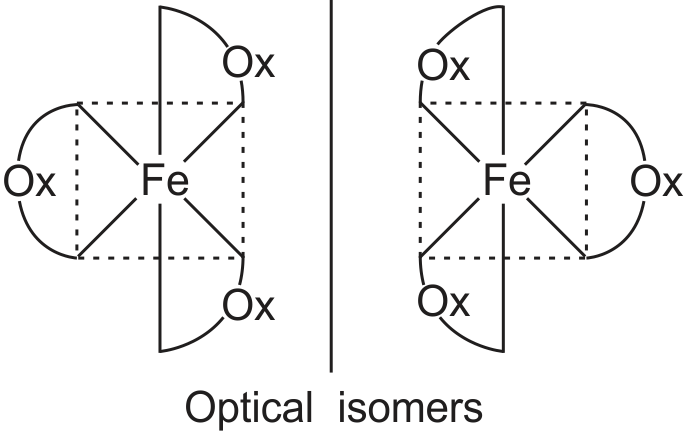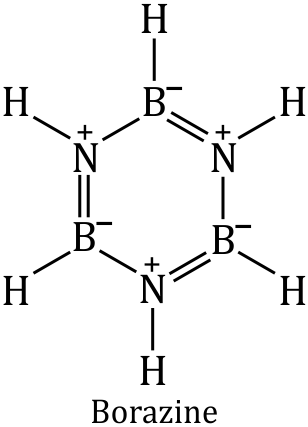AIIMS Practice Paper Chemistry
1. When benzaldehyde reacts with acetaldehyde in presence of aq. NaOH, the product obtained is
(a) Crotonaldehyde
(b) Benzoin
(c) Cinnamaldehyde
(d) Paraldehyde
2. 
Identify the compound Z.
(a) Phenyl cyanide
(b) Benzoic acid
(c) Nitrobenzene
(d) Benzene diazonium chloride
3. The de-Broglie wavelength of an electron in the ground state of hydrogen atom is :
[K.E. = 13.6 eV; 1 eV = 1.602 × 10−19 J]
(a) 33.28 nm
(b) 3.328 nm
(c) 0.3328 nm
(d) 0.0332 nm
4. When R3C−, R2CH−, R−CH2− groups are attached to an unsaturated group, the decreasing order of inductive effect is (R−alkyl group )
(a) R3C− < R2CH− > R−CH2−
(b) R−CH2− > R2CH− > R3C−
(c) R3C− > R2CH− > R−CH2−
(d) R3C− < R2CH− < R−CH2−
5. Which of the statements about anhydrous aluminium chloride is correct?
(a) It exists as a monomer molecule such as AlCl3.
(b) It is not hydrolysed.
(c) It is a Lewis base.
(d) It is obtained by passing dry chlorine over heated mixture of alumina and coke.
6. The composition of butter of tin is
(a) SnCl2 ∙ 2H2O
(b) SnCl4 ∙ 5H2O
(c) SnO2
(d) Sn + CH3COOH
7. Which of the following is heated with silica at high temperature to form carborundum?
(a) Nitrogen
(b) Carbon
(c) Carbon monoxide
(d) None of these
8. Pick out the incorrect statement from the followings.
(a) sp2 hybrid orbitals are equivalent and bond angle between any two of them is 120°.
(b) sp3d2 hybrid orbitals are equivalent and are oriented towards corners of a regular octahedron.
(c) sp3d3 hybrid orbitals are not equivalent.
(d) dsp2 hybrid orbitals are equivalent with a bond angle of 90° between any two of them.
9. Calculate the percent dissociation of H2S if 0.2 mole of H2S is kept in a 800 ml vessel at 600° C for the reaction
![]() . The equilibrium constant of the reaction is 8 × 10−6.
. The equilibrium constant of the reaction is 8 × 10−6.
(a) 40%
(b) 4%
(c) 0.4%
(d) 6%
10. Consider a 2nd order reaction, 2A → Product.
If 40% of the reaction is completed in 400 seconds, how much time will it take for 80% completion?
(a) 2400
(b) 2600
(c) 1800
(d) 2700
11. Calculate the free energy change of the reaction, when

If the heat of reaction is −216 kJ/mole, calculate the change in entropy of the reaction.
(a) 12.4 kJK-1mol-1
(b) 11.8 kJK-1mol-1
(c) 11.8 JK-1mol-1
(d) 12.4 JK-1mol-1
12. Which of the following are arranged in the decreasing order of dipole moment?
(a) CH3Cl, CH3Br, CH3F
(b) CH3Cl, CH3F, CH3Br
(c) CH3Br, CH3Cl, CH3F
(d) CH3Br, CH3F, CH3Cl
13. A mixture of ethyl alcohol and propyl alcohol has a vapour pressure of 290 mm at 300 K. The vapour pressure of propyl alcohol is 200 mm. If the mole fraction of ethyl alcohol is 0.6, its vapour pressure (in mm) at the same temperature will be
(a) 350
(b) 300
(c) 700
(d) 360
14. Aluminium oxide may be electrolyzed at 1000℃ to furnish aluminium metal(Atomic mass =27 u; 1 F= 96500 C). The cathode reaction is
Al3+ + 3e− → Al0
To prepare 5.12 kg of aluminium metal by this method would require
(a) 5.49 ×101 C of electricity
(b) 5.49 ×104 C of electricity
(c) 1.83 ×107 C of electricity
(d) 5.49 ×107 C of electricity
15. A metal, M forms chlorides in its +2 and +4 oxidation states. Which of the following statements about these chlorides is correct?
(a) MCl2 is more volatile than MCl4
(b) MCl2 is more soluble in anhydrous ethanol than MCl4
(c) MCl2 is more ionic than MCl4
(d) MCl2 is more easily hydrolyzed than MCl4
16. The products obtained on heating LiNO3 will be
(a) LiNO2 + O2
(b) Li2O +NO2 + O2
(c) Li3N + O2
(d) Li2O + OH + O2
17. A metal M forms water soluble MSO4 and inert MO. MO in aqueous solution forms insoluble M(OH)2 that is soluble in NaOH. Metal M is
(a) Be
(b) Mg
(c) Ca
(d) Si
18. Heating mixture of Cu2O and Cu2S will give
(a) Cu2SO3
(b) CuO + CuS
(c) Cu + SO3
(d) Cu + SO2
19. In context with the industrial preparation of hydrogen from water gas(CO + H2), which of the following is the correct statement?
(a) CO and H2 are fractionally separated using differences in their densities.
(b) CO is removed by absorption in aqueous Cu2Cl2 solution.
(c) H2 is removed through occlusion with Pd.
(d) CO is oxidized to CO2 with steam in the presence of a catalyst followed by absorption of CO2 in alkali.
20. The bond order in NO is 2.5 while that in NO+ is 3. Which of the following statements is true for these two species?
(a) Bond length in NO+ is greater than in NO
(b) Bond length in NO is greater than in NO+
(c) Bond length in NO+ is equal to that in NO
(d) Bond length is unpredictable
21. What would happen when a solution of potassium chromate is treated with an excess of dilute nitric acid?
(a) Cr3+ and Cr2O72− are formed
(b) Cr2O72− and H2O are formed
(c) CrO42− is reduced to +3 state of Cr
(d) None of these
22. The equilibrium constants ![]() for the reactions X ⇌ 2Y and Z ⇌ P + Q, respectively are in the ratio of 1 : 9. If the degree of dissociation of X and Z be equal, then the ratio of total pressure at these equilibria is
for the reactions X ⇌ 2Y and Z ⇌ P + Q, respectively are in the ratio of 1 : 9. If the degree of dissociation of X and Z be equal, then the ratio of total pressure at these equilibria is
(a) 1 : 36
(b) 1 : 3
(c) 1 : 1
(d) 1 : 9
23. Among Al2O3, SiO2, P2O3 and SO2 the correct order of acid strength is
(a) SO2 < P2O3 < SiO2 < Al2O3
(b) SiO2 < SO2 < Al2O3 < P2O3
(c) Al2O3 < SiO2 < SO2 < P2O3
(d) Al2O3 < SiO2 < P2O3 < SO2
24. The IUPAC name of the complex

(a) Triamminechromium(III) −μ−hydroxo− μ −hydroxo− μ −amido−chromium(III)sulphate
(b) Tetraamminebis(ethylene diamine) − μ −hydroxo− μ −imidodichromium(III)sulphate
(c) Dichromium(III)tetraminebis(ethylene diamine) – μ− hydroxo− μ –inido−sulphate
(d) μ −hydroxo− μ −imido−tetraamminebis(ethylene diamine)dchromium(III)sulphate
25. A compound of a metal ion (Mx+) has a spin only magnetic moment of √8 Bohr magnetons. The number of unpaired electrons in the compound are (Z = 28)
(a) 0
(b) 1
(c) 2
(d) 3
26. Zinc granules are added in excess to 400 ml of 0.1 M nickel salt solution at 298 K until the equilibrium is reached. What will be the equilibrium constant at 25°C of
![]()
(a) 1.78 × 1015
(b) 1.78 × 1014
(c) 1.78 × 1016
(d) 1.78 × 1017
27. What is the order of bond angle in the hydrides of the elements of nitrogen family?
(a) PH3 > NH3 > AsH3 > SbH3
(b) PH3 > SbH3 > AsH3 > NH3
(c) SbH3 > AsH3 > PH3 > NH3
(d) NH3 > PH3 > AsH3 > SbH3
28. At what temperature, the kinetic energy of 6 gms of oxygen is equal to the kinetic energy of 0.5 mole of methane at 27℃?
(a) 600K
(b) 800℃
(c) 800K
(d) 600℃
29. Calculate the pressure exerted by 32g of methane in a 500 ml container at 27℃ if it obeys Vander waal’s equation. Vander Waal’s constants are a = 2.253 atm L2 mol−1 and b = 0.0428 L mol−1.
(a) 53.724 atm
(b) 65.402 atm
(c) 95.225 atm
(d) 82.672 atm
30. Which of the following reactions is not feasible?
(a) 2KI + Cl2 → 2KCl + I2
(b) 2KBr + F2 → 2KF + Br2
(c) 2KCl + Br2 → 2KBr + Cl2
(d) 2KI + F2 → 2KF + I2
31. From the following conversion, identify the unknown compound “Z”.
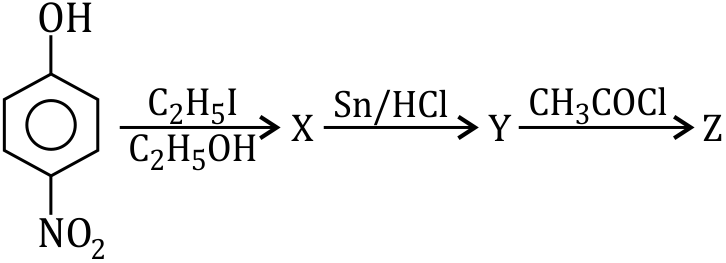
(a) 
(b) 
(c) 
(d) 
32. A ketone reacts with methyl magnesium bromide followed by hydrolysis forms 2-methylbutan-2-ol. The ketone reacts with hydroxylamine followed reduction forms butan-2-amine. Name the ketone .
(a) Pentan-2-one
(b) Butan-2-one
(c) Petan-2-ol
(d) 2-methylbutanone
33. In aqueous solutions, amino acid mostly exist as
(a) NH2−CHR−COOH
(b) NH2−CHR−COO−
(c) ![]()
(d) ![]()
34. Which of the following is wrong, when N2 and O2 are converted into mono anions?
(a) In oxygen mono anion, the oxygen-oxygen bond length increases.
(b) In Nitrogen monoanion, the N-N bond weaker.
(c) In O2−, bond order decreases.
(d) In N2−, it becomes diamagnetic.
35. Which of the following statement is correct?
(a) Electron gain enthalpy of inert gas is positive.
(b) Fluorine has highest electron affinity
(c) Covalent radius is bigger than Vander Waal’s radius
(d) Increase in effective nuclear charge increases the ionization energy.
36. When excess of AgNO3 is added to a solution of one mole of Ni(H2O)x(Br)3, only one mole of AgBr gets precipitated, so
(a) two Br− ions are outside the co-ordination sphere
(b) three Br− ions are outside the co-ordination sphere
(c) If the C.N of Ni is 6 then four H2O molecules should be inside the co-ordination sphere.
(d) the oxidation state of Ni in the molecule should be +1.
37. Magnesia mixture solution is used to test
(a) As3+
(b) PO43−
(c) None of these
(d) Both (a) & (b)
38. Which of the following is a wrong statement?
(a) The order of reactivity of alkyl halide in SN1 reaction is 3° > 2° > 1° > CH3−X.
(b) E1 reaction is two step reaction.
(c) The concentration and basicity of solvent have no effect on rate of reaction of SN1.
(d) The concentration of reagent does not depend on the rate of SN2 reaction.
39. A hydrocarbon (A) of formula C8H10, on ozonolysis gives compound (B), C4H6O2 only. The compound (B) can also be obtained from alkyl bromide (C), C3H5Br upon treatment with magnesium in dry ether, followed by carbon dioxide and acidification. The compound A is
(a) CH3 − CH2 − C ≡ C – C ≡ C – CH3
(b) CH3 – C ≡ C – CH2 – C ≡C – CH2 – CH3
(c) CH3 – C ≡ C – CH2 – C ≡ C – CH3
(d) C3H5 – C ≡ C – C3H5
40. Which of the following alkenes is the most stable?
(a) CH3CH = CHCH3
(b) (CH3)2 C = CH2
(c) (CH3)2C = CHCH3
(d) (CH3)2C = C(CH3)2
41. Gutta percha is a
(a) synthetic polymer obtained from isoprene by free radical polymerization.
(b) synthetic polymer obtained from isoprene by co-ordination polymerization
(c) natural polymer occurring in plants with all trans configuration.
(d) natural polymer occurring in plants with a mixture of cis and trans configuration.
42. Which of the following is called milk of magnesia?
(a) Suspension of MgSO4
(b) Suspension of Mg(OH)2
(c) Solution of Mg(NO3)2
(d) Solution of MgCO3
43. Which of the following is a correct statement?
(a) The no. of electrons present in 1.6 gm of CH4 is 6.023 × 1022.
(b) The normality of mixture obtained by mixing 100 ml of 0.2 M H2SO4 and 100 ml of 0.2 M NaOH is 0.3 N.
(c) 80 litre of oxygen is necessary for the complete combustion of 20 lit. of propane.
(d) 0.14 mole of Al2(SO4)3 would be in 50 g of the substance.
44. Match the following :
List I List II
A- Excluded molar volume (I) All gases behave ideally
B- Higher compressibility factor (II) b
C – At Boyles temperature (III) Difficult is the liqueification of gas
D – Only a small fraction of (IV) Maxwell distribution law.
molecules have either very low
or high velocity
(a) A-III B-II C-I D-IV
(b) A-II B-III C-IV D-I
(c) A-III B-I C-II D-IV
(d) A-II B-III C-I D-IV
45. Addition of HOCl to allyl alcohol gives
(a) 2-Chloropropane-1, 3-diol
(b) 3-Chloropropane-1, 2-diol
(c) 2, 3-Dichloropropanol
(d) 1, 2, 3-Trichloropropane
46. Martius yellow is an example of
(a) Indirect dye
(b) Direct dye
(c) Mordant dye
(d) Basic dye
47. K3[Fe(C2O4)3] exhibits
(a) Geometrical isomerism
(b) Optical isomerism
(c) Coordination isomerism
(d) Ionization isomerism
48. Which of the following is a correct statement?
(a) Tin stone is magnetic in nature.
(b) Wolframite is magnetic in nature.
(c) Anglesite is PbCO3.
(d) Cassiterite is sulphide ore.
49. Mass percentage of deuterium in heavy water is
(a) same as that of protium in water
(b) 20
(c) 11.1
(d) unpredictable
50. A certain compound has a formula C3H6O. It combines with hydroxylamine to form two compounds which are geometrical isomers of each other. What is the compound?
(a) HCHO
(b) CH3CH2CHO
(c) CH3COCH3
(d) CH2 = CHCH2OH
51. Assertion: A solution of FeCl3 in water produces precipitate on standing.
Reason: Hydrolysis of FeCl3 takes place in water.
(a) If both the assertion and reason are true and reason is the correct explanation of the assertion.
(b) If both the assertion and reason are true but the reason is not the correct explanation of the assertion.
(c) If the assertion is true but the reason is false.
(d) If the assertion is false but the reason is true.
52. Assertion: Benzene is reactive while inorganic benzene is unreactive compound.
Reason: Inorganic benzene is borazine, B3N3H6.
(a) If both the assertion and reason are true and reason is the correct explanation of the assertion.
(b) If both the assertion and reason are true but the reason is not the correct explanation of the assertion.
(c) If the assertion is true but the reason is false.
(d) If the assertion is false but the reason is true.
53. Assertion : The O—O bond length in H2O2 is shorter than that of O2F2.
Reason : H2O2 is an ionic compound.
(a) If both assertion and reason are true and the reason is the correct explanation of the assertion.
(b) If both assertion and reason are true but the reason is not the correct explanation of the assertion.
(c) If assertion is true but the reason is false.
(d) If both assertion and reason are false.
54. Assertion : Effusion rate of oxygen is smaller than nitrogen.
Reason : Molecular size of nitrogen is smaller than oxygen.
(a) If both assertion and reason are true and the reason is the correct explanation of the assertion.
(b) If both assertion and reason are true but the reason is not the correct explanation of the assertion.
(c) If assertion is true but the reason is false.
(d) If both assertion and reason are false.
55. A: The angular momentum of electron in any Bohr orbit is given by the integral multiple of h/2π where ‘n’ is the principal quantum number.
R : The integral multiple of wavelength of electron is integral multiple of 2 πr.
(a) Both A and R are true and R is the correct explanation of A.
(b) Both A and R are true but R is not correct explanation of A.
(c) A is true, R is false.
(d) A is false, R is true.
56. A : Primary benzylic halides are more reactive than primary alkyl halides towards SN1 reaction.
R : Reactivity depends upon the nature of the nucleophile and the solvent.
(a) Both A and R are true and R is the correct explanation of A.
(b) Both A and R are true but R is not correct explanation of A.
(c) A is true, R is false.
(d) A is false, R is true.
57. A : If 1 Faraday of electricity is passed through acidified water, the volume of O2 liberated at NTP will be 5.6 litres.
R : As 16 g of oxygen at NTP liberates 22.4l.
(a) Both A and R are true and R is the correct explanation of A.
(b) Both A and R are true but R is not correct explanation of A.
(c) A is true, R is false.
(d) A is false, R is true.
58. A : Tetra cyano Nickelate (II) ion is square planar and diamagnetic in nature.
R : It has dsp2 hybridized and no unpaired electrons due to presence of strong ligand.
(a) Both A and R are true and R is the correct explanation of A.
(b) Both A and R are true but R is not correct explanation of A.
(c) A is true, R is false.
(d) A is false, R is true.
59. A : Caesium is the most electropositive non radioactive element in the periodic table.
R : The first ionization potential of Cs is less than that of Potassium.
(a) Both A and R are true and R is the correct explanation of A.
(b) Both A and R are true but R is not the correct explanation of A.
(c) A is true, R is false.
(d) A is false, R is true.
60. A : The molecule of oxygen is paramagnetic in nature.
R : This property is due to the presence of unpaired electron in π*2Px and π*2Py antibonding orbital.
(a) Both A and R are true and R is the correct explanation of A.
(b) Both A and R are true but R is not the correct explanation of A.
(c) A is true, R is false.
(d) A is false, R is true.
Latest Govt Job & Exam Updates:

